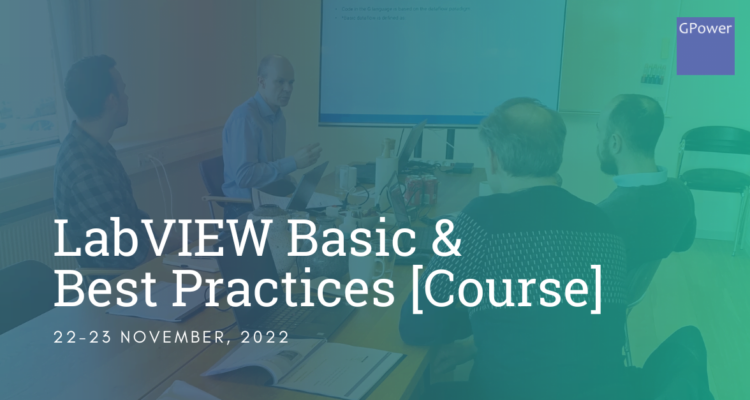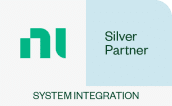Would you like to be taught in LabVIEW by Denmark's leading experts? Then, it's time to register! ✅
LabVIEW Basic & Best Practices: 22-23 November, 2022
In collaboration with CN Rood, we organize a LabVIEW course at our Headquarters in Hinnerup near Aarhus.
It’s a two-day, exclusive course with a maximum of 10 participants. So, hurry up to save yourself a seat!
Price: 1399$ for each participant.
Day 1 - See the program for 22 November
- Introduction
- What Is LabVIEW
- Why Use LabVIEW
- How to Install It
- The LabVIEW Development Environment
- The Virtual Instrument
- Palettes
- Quick Drop
- Data Types
- Collections Of Data Types
- Controls, Indicators and Terminals
- Function Nodes (LabVIEW Primitives)
- LabVIEW Project Explore
- Code Development In LabVIEW
- Documentation
- The Dataflow Paradigm
- Structures
- Data Manipulation
- Synchronization
- Files
- Libraries and Name Spacing
Day 2 - See the program for 23 November
- Basic Error Handling
- The Error Cluster
- Propagation Of Errors
- Merging Errors
- Build Custom Errors
- Display Errors
- Log Errors
- Debug And Test
- Debug Tools
- Analyzing and Profiling
- Unit Testing
- Design Patterns
- Design Patterns
- Advanced Design Patterns
- Exercise: Implement Application
- Building Application
- Application Builder
- Executable
- Installer
- Packed Project Library (PPL)
- Source Distribution
- NI Packages
- Exercise: Build and Deploy an Application
- Q&A Course Wrap-up
Why LabVIEW?
LabVIEW is a development environment for the graphical programming language G from NI (National Instruments). The programming language is strong when it is used for tasks that require test, measurement, and control.
An advantage of LabVIEW is that it visualizes every aspect of applications, including hardware configuration, measurement data, and debugging. This visualization makes it more simple to integrate measurement hardware from any vendor, develop data analysis algorithms, and design custom engineering user interfaces.


![Vælg GPower – de højest certificerede inden for test [TestStand]](https://www.gpower.io/wp-content/uploads/2019/08/gpower-test-teststand.webp)

![Alliance Day 2019 [National Instruments]](https://www.gpower.io/wp-content/uploads/2019/03/alliance-day-2019-national-instruments-dk-1.png)
